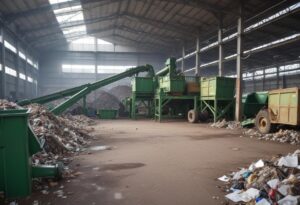Wind energy is one potential source of renewable energy in the future. More people are using it than ever before. But the perceived drawbacks of this alternative energy source must be mentioned and addressed in order to evaluate it honestly and clearly.
How Does Wind Power Work?
Although winds constantly blow, not all of them are suitable for producing electricity. On farms, windmills are used to generate electricity for tasks like milling grain into flour. We are now looking to this weather phenomenon to replace the use of fossil fuels with a workable energy source.
Wind turbines are used to harness the power of the wind. They resemble a child’s pinwheel and are made to look like enormous plane propellers on top of a stick. The rotor and blade assembly can be directly contacted by the wind because the towers are constructed so high. The kinetic energy of the wind is converted into mechanical energy as the blades rotate. The wind turbine’s nacelle, which houses its hardware and wiring, houses a generator that transforms mechanical energy into electrical energy.
Currently, only a very small portion of the country’s electricity needs are met by wind energy.
One renewable resource is wind energy. It is a trend in the weather. It blows unrestrainedly all over the world. It’s quite another thing to turn it into a more reliable and substantial form of electricity. Some of the points we will go over below may have been suggested by those who consider the drawbacks of researching alternative energy sources.
There are winds everywhere, but not all places are suitable for the installation of wind turbines. The Appalachians, Alaska, and the western part of the US experience the country’s strongest winds. The amount of kinetic energy produced and, consequently, the amount of electricity that can be generated are directly related to wind speed.
Environmental concerns: One of the most common grievances is that these enormous wind turbines are to blame for the rise in wildlife fatalities. These structures are being hit by birds and bats. Even though the numbers are not as high as those of wildlife killed in collisions with tall buildings, they are still enough to be alarming. Environmental activists are dissatisfied.
Large wind farms: You need a lot of wind turbines in one location to generate enough electricity to power a town. Each does not suffice on its own.
Some wind farms can produce a lot of noise. Even though the noise is not excessive, some groups already oppose the development of these farms in rural areas, so it serves as a deterrent. Because of this, some systems in more recent technology are quieter than earlier ones.
Are these alleged drawbacks significant enough to prevent further growth of wind energy?





